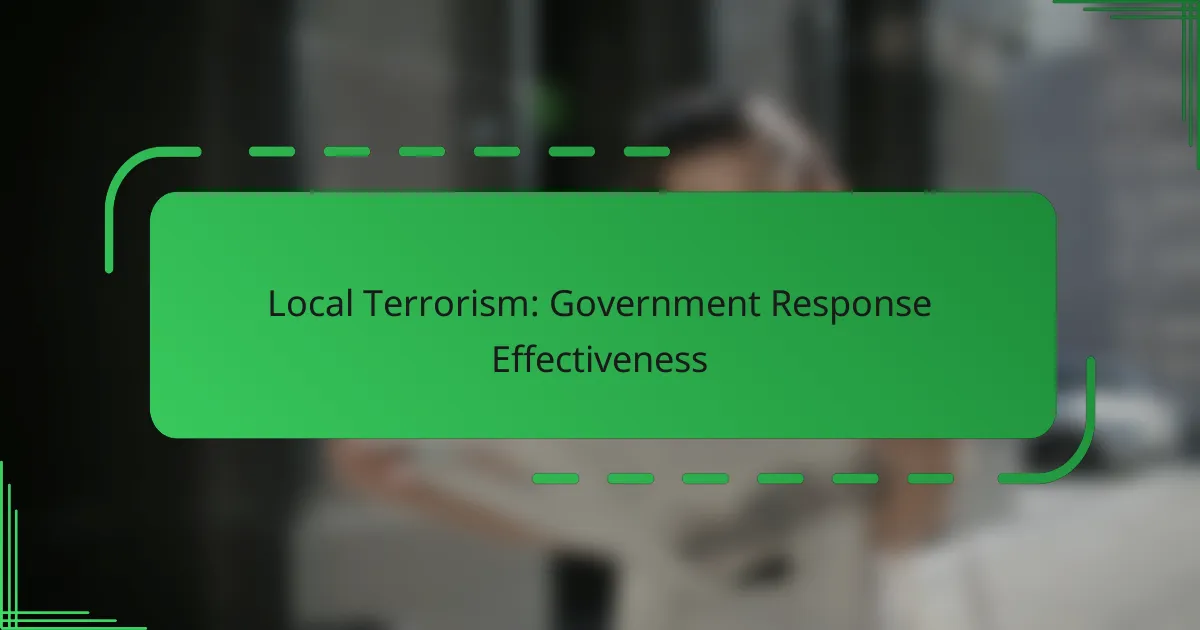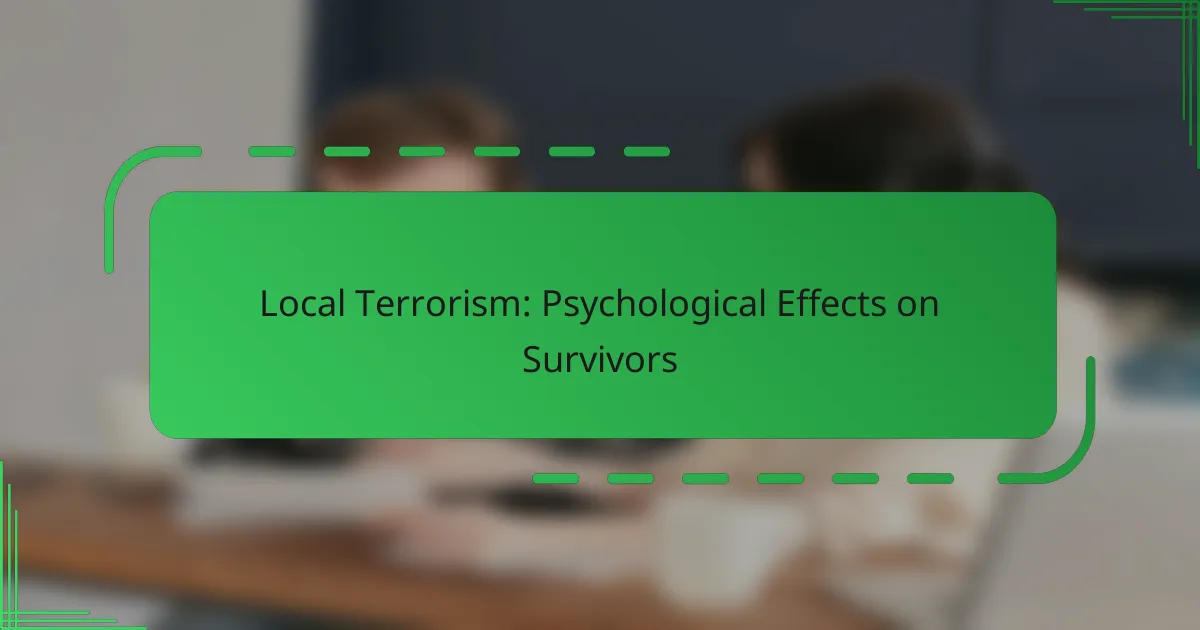Government responses to local terrorism in the United States are increasingly effective when they incorporate a multifaceted approach that includes funding, community engagement, and intelligence sharing. By focusing on prevention and fostering collaboration between law enforcement and residents, these strategies aim to disrupt potential threats and enhance community resilience against extremist ideologies.
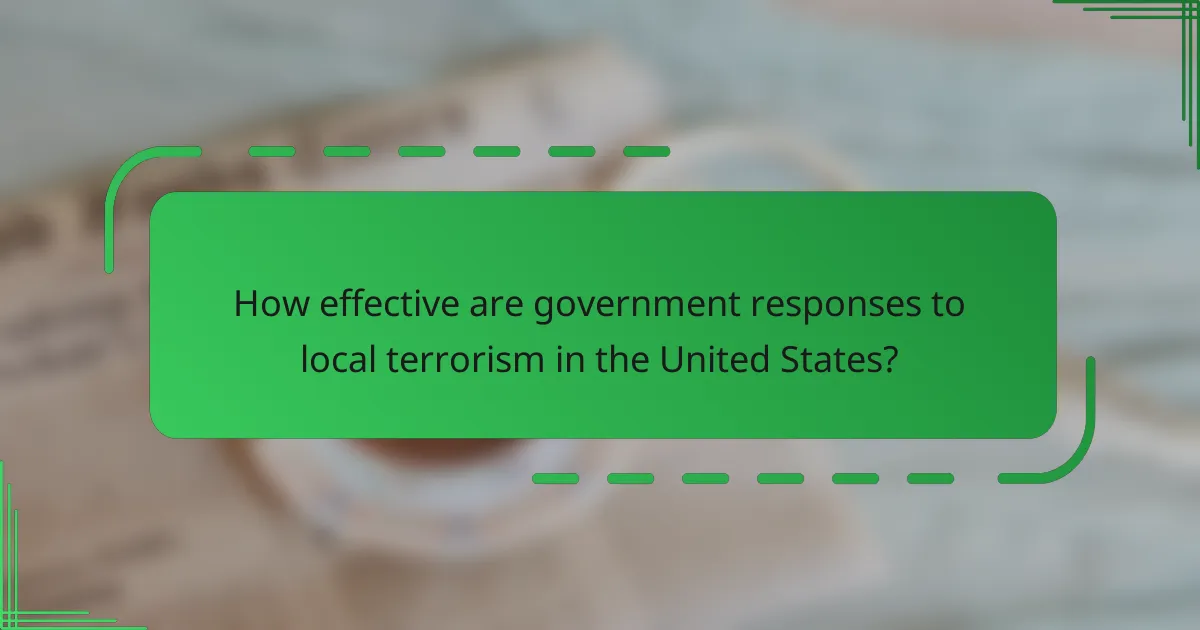
How effective are government responses to local terrorism in the United States?
Government responses to local terrorism in the United States can be effective, particularly when they involve a combination of funding, community engagement, intelligence sharing, training, and legislative measures. These strategies aim to enhance safety and prevent terrorist activities at the local level.
Increased funding for local law enforcement
Increased funding for local law enforcement plays a crucial role in combating local terrorism. This funding can be allocated for advanced equipment, technology, and personnel, which are essential for effective surveillance and response.
For instance, grants from federal programs can help local police departments enhance their capabilities, allowing them to better monitor potential threats and respond swiftly to incidents. Communities with well-funded law enforcement often report improved safety and a stronger deterrent against terrorist activities.
Implementation of community engagement programs
Community engagement programs are vital for building trust between law enforcement and local populations. These initiatives encourage residents to report suspicious activities and foster a collaborative environment where safety concerns can be addressed collectively.
Examples include neighborhood watch programs and community policing efforts, which help to create a sense of shared responsibility for local security. Engaging community leaders and organizations can also enhance outreach and education about recognizing and preventing terrorism.
Use of intelligence-sharing networks
Intelligence-sharing networks are essential for effective counter-terrorism efforts at the local level. These networks facilitate the flow of information between various law enforcement agencies, federal bodies, and community organizations, which can lead to timely interventions.
By sharing intelligence, agencies can identify patterns and potential threats more effectively. Local police departments that participate in these networks often have access to critical data that can prevent attacks before they occur.
Enhanced training for first responders
Enhanced training for first responders is crucial in preparing them to handle local terrorism incidents effectively. This training includes not only tactical skills but also crisis management and community interaction techniques.
Regular drills and simulations help first responders practice their response to various scenarios, ensuring they can act quickly and efficiently during real events. Agencies that invest in comprehensive training programs often see improved outcomes during emergencies.
Legislative measures for counter-terrorism
Legislative measures play a significant role in shaping the government’s response to local terrorism. Laws that provide funding for counter-terrorism initiatives, as well as regulations that enhance surveillance and reporting requirements, are critical components of an effective strategy.
For example, legislation that supports the establishment of task forces dedicated to counter-terrorism can lead to more coordinated efforts among various agencies. Additionally, laws that promote public-private partnerships can enhance resource sharing and community resilience against terrorism.
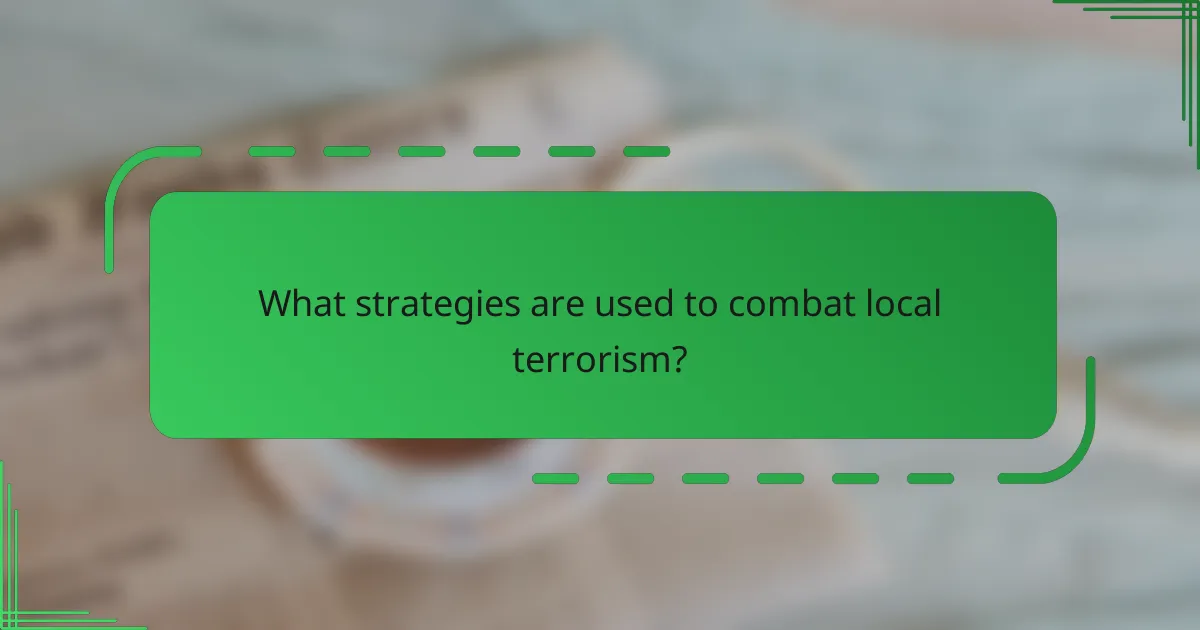
What strategies are used to combat local terrorism?
Governments employ various strategies to combat local terrorism, focusing on prevention, public engagement, and inter-agency collaboration. These approaches aim to disrupt potential threats and enhance community resilience against extremist ideologies.
Preventive policing initiatives
Preventive policing initiatives involve proactive measures taken by law enforcement to deter terrorist activities before they occur. This can include increased surveillance in high-risk areas, community patrols, and intelligence gathering to identify potential threats.
Effective preventive strategies often rely on building trust within communities, encouraging citizens to report suspicious activities. Programs that foster relationships between police and local residents can significantly enhance the effectiveness of these initiatives.
Public awareness campaigns
Public awareness campaigns aim to educate citizens about the signs of local terrorism and how to respond. These campaigns often utilize social media, community meetings, and educational materials to inform the public about safety measures and reporting procedures.
Effective campaigns typically emphasize the importance of vigilance and community involvement. For instance, initiatives may encourage citizens to recognize and report unusual behavior, fostering a collective responsibility for safety.
Collaboration with federal agencies
Collaboration with federal agencies enhances local governments’ capabilities to combat terrorism through resource sharing and intelligence exchange. Local law enforcement often works alongside federal entities like the FBI or DHS to access broader databases and expertise.
This collaboration can also include joint training exercises and coordinated responses to incidents. By aligning strategies and resources, local and federal agencies can improve their overall effectiveness in preventing and responding to local terrorism threats.
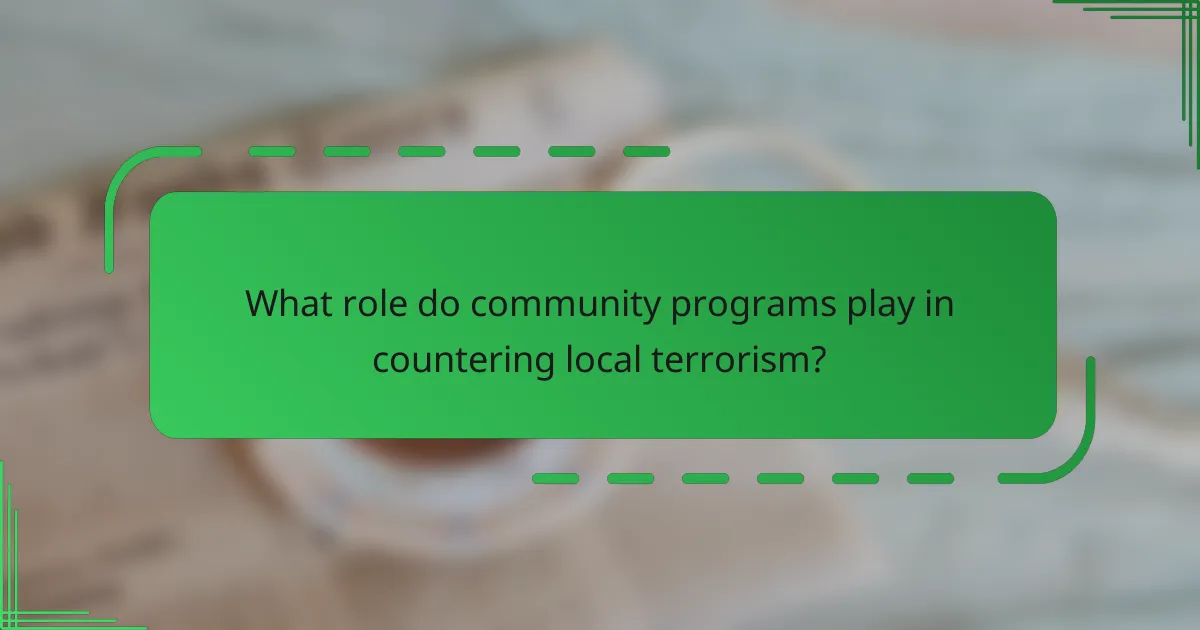
What role do community programs play in countering local terrorism?
Community programs are essential in countering local terrorism by fostering collaboration between residents and law enforcement, educating the public, and promoting social unity. These initiatives help build resilience against extremist ideologies and create safer environments.
Building trust between communities and law enforcement
Building trust is crucial for effective counter-terrorism efforts. When communities feel they can rely on law enforcement, they are more likely to report suspicious activities and cooperate in prevention efforts. Programs that facilitate regular interactions, such as community policing initiatives, can significantly enhance this trust.
Engagement activities, such as open forums and neighborhood watch programs, allow residents to voice concerns and share information. This two-way communication fosters a sense of partnership, making it easier to address potential threats before they escalate.
Reducing radicalization through education
Education plays a vital role in reducing radicalization by informing individuals about the dangers of extremist ideologies. Community programs that offer workshops, seminars, and youth outreach initiatives can help dispel myths and provide critical thinking skills to counteract radical narratives.
Targeted educational efforts, particularly in schools and community centers, can reach vulnerable populations. Programs that promote inclusivity and diversity can help young people understand different perspectives, reducing the appeal of extremist groups.
Promoting social cohesion
Social cohesion is essential for preventing local terrorism, as it creates a united front against divisive ideologies. Community programs that encourage cultural exchange, volunteerism, and collaborative projects can strengthen relationships among diverse groups, fostering a sense of belonging.
Activities like community festivals, sports events, and joint service projects can bridge gaps between different demographics. These initiatives not only build friendships but also create a supportive environment where individuals are less likely to turn to violence or extremism.

How do government policies impact local terrorism rates?
Government policies play a crucial role in shaping local terrorism rates by influencing the underlying social, economic, and political conditions. Effective policies can reduce the appeal of extremist ideologies and enhance community resilience, while ineffective measures may exacerbate tensions and lead to increased incidents.
Analysis of policy effectiveness
Evaluating the effectiveness of government policies on local terrorism requires examining various strategies, such as community engagement, law enforcement practices, and counter-radicalization programs. Policies that foster trust between communities and authorities tend to yield better results, as they encourage cooperation and information sharing.
For instance, programs that provide educational opportunities and economic support in high-risk areas have shown promise in reducing radicalization. Conversely, heavy-handed tactics that alienate communities can lead to increased resentment and, ultimately, higher terrorism rates.
Correlation between policy changes and incident rates
There is often a direct correlation between significant policy changes and fluctuations in local terrorism incident rates. For example, the introduction of community policing initiatives may coincide with a decrease in extremist activities, as these programs build relationships and trust within communities.
On the other hand, abrupt policy shifts, such as increased surveillance or militarization of police forces, can lead to spikes in local terrorism incidents. Monitoring these correlations helps policymakers adjust strategies to effectively address the evolving landscape of threats.

What are the challenges in measuring government response effectiveness?
Measuring government response effectiveness to local terrorism presents several challenges, primarily due to the complexity of incidents and the diverse factors influencing outcomes. These challenges include the lack of standardized metrics, varying definitions of success, and the dynamic nature of threats.
Lack of standardized metrics
The absence of standardized metrics complicates the evaluation of government responses to local terrorism. Different agencies may use varying criteria to assess effectiveness, leading to inconsistent data and conclusions. For instance, one agency might prioritize the number of arrests, while another focuses on community engagement or prevention rates.
To address this issue, it is essential to develop a common framework that includes key performance indicators (KPIs) relevant to local terrorism. These could encompass response times, public perception, and the reduction of incidents over time. Establishing such a framework can help facilitate better comparisons and assessments across different jurisdictions.
Governments should also consider incorporating qualitative measures, such as community feedback and stakeholder engagement, to complement quantitative data. This holistic approach can provide a more comprehensive understanding of the effectiveness of responses to local terrorism.
